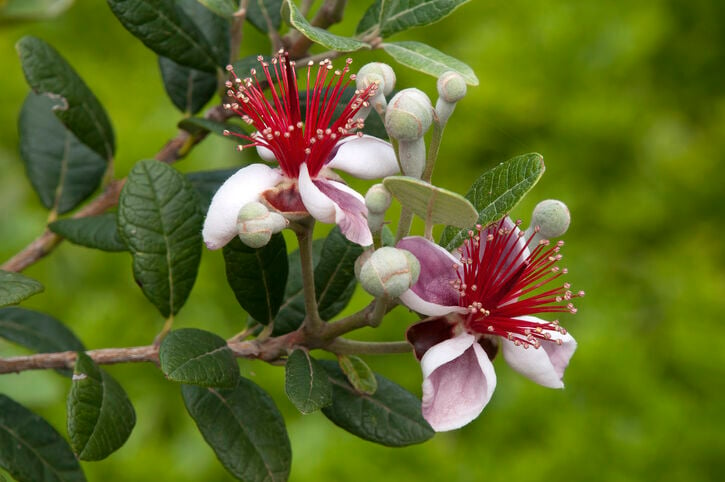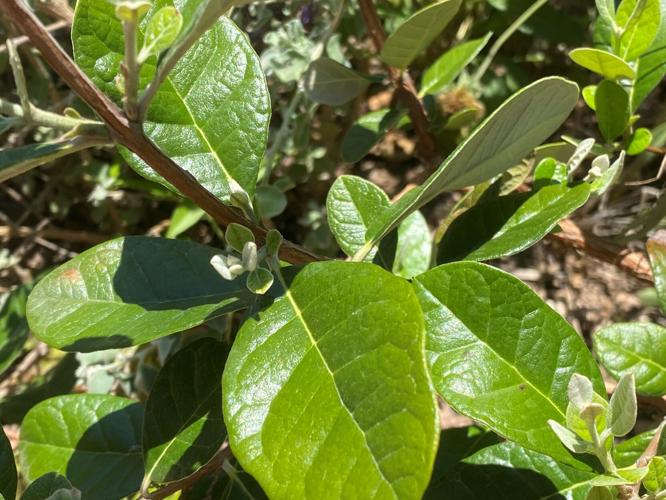The pineapple guava (Acca sellowiana) is a small fruit tree that has been grown from Scotland to New Zealand. This beautiful small tree is a great candidate for many gardens. It is native to South America but grows well in our climate, since it’s hardy to 10 F and likes our sun (mostly). It grows to about 15 feet tall, and can be pruned as a large shrub or a small tree.
While the pineapple guava likes full sun, it would do best with some afternoon shade, particularly if you want it to produce fruit. It is fairly drought-tolerant, but will need a fair amount of water during our hot summers, and good drainage is a must. It tolerates poor soil and many gardeners recommend against fertilizing.
The pineapple guava is a great all-’rounder — it can be espaliered, trained flat against a wall; grown in a container; as an informal hedge; or as a small patio tree. It’s evergreen, and has beautiful two-colored oval leaves — dark green on top and silvery on the bottom. The flowers are cotton-candy pink with red stamens, and, like the fruit, are edible. The plant is reported to be deer-resistant (although I’m not sure about the fruit!). It has no thorns and little litter. It can be grown from seed or cuttings, but should be fairly easy to find in nurseries.

The pineapple guava tree has bi-colored leaves that are a deep green on the top and silvery on the bottom. It makes a lovely ornamental tree or shrub.
Pineapple guava requires about 50 chill hours to set fruit, a perfect number for our climate. They don’t like to set fruit above 90 F so you may see fewer fruit if you plant it in a really hot spot — a morning exposure would probably be best. The fruit is light green, oval and a bit smaller than a chicken egg. It bruises easily, so it’s not ideal for transport and sale, which is why most of us have never had one. The taste is fruity and tangy. It can be eaten raw or made into jams, jellies, pies, chutneys, and the like. It’s reported to have some medicinal qualities, and has been used as an anti-inflammatory and immunomodulator.
You can find self-fruitful varieties, but it’s best to have more than one for optimal fruit production.They are pollinated by birds in their native habitat, but if you’re looking for lots of fruit it might be best to hand-pollinate it yourself with a small brush. Keep in mind that (like many fruit trees) they may take a few years to start bearing fruit. If you don’t care that much about the fruit, just sit back and enjoy your beautiful tree.





